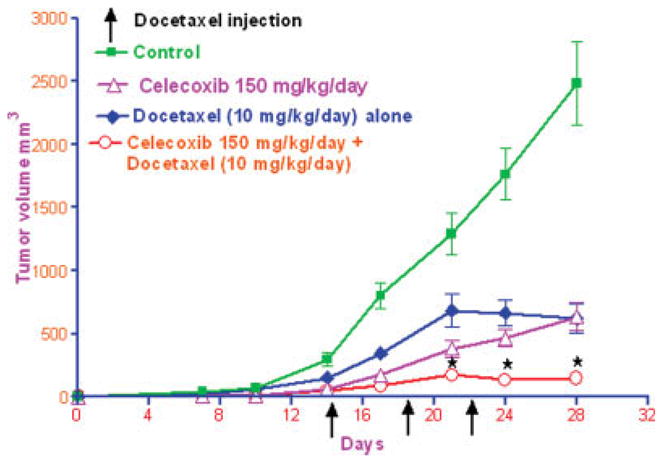Figure 2.

Antitumor activity of celecoxib, docetaxel and celecoxib with docetaxel combination against A549 lung tumors. The nude mice were s.c. implanted with 5 × 106 A549 cells in the right hind leg and randomly divided into 4 groups (10 per group). Two groups of mice were given celecoxib by oral gavage (150 mg/kg/day), initiated 1 day after tumor implantation and continued till the end of the experiment (28 days). One of the celecoxib fed group was further used for the administration of docetaxel, whereas the other group served as celecoxib only-treated group. Docetaxel was administered by i.v. via tail vein at 10 mg/kg dose on Days 14, 18 and 22 after tumor implantation. Docetaxel treatment was initiated on Day 14 in docetaxel alone and celecoxib with docetaxel-treated groups. Control mice were administered with vehicle used for docetaxel by i.v. in the same schedule as used for docetaxel treatment. The tumor dimensions (longest diameter and shortest diameter) were observed twice weekly. Tumor volume was calculated as the half the product of longest diameter and the square of the shortest diameter. Data presented was mean ± SEM. ⋆At 21–28 days post-tumor implantation, the tumor volumes observed in celecoxib with docetaxel combination-treated group were significantly lower (p < 0.03), as compared to control-, docetaxel-or celecoxib-treated mice as analyzed by non-parametric Mann-Whitney test.
